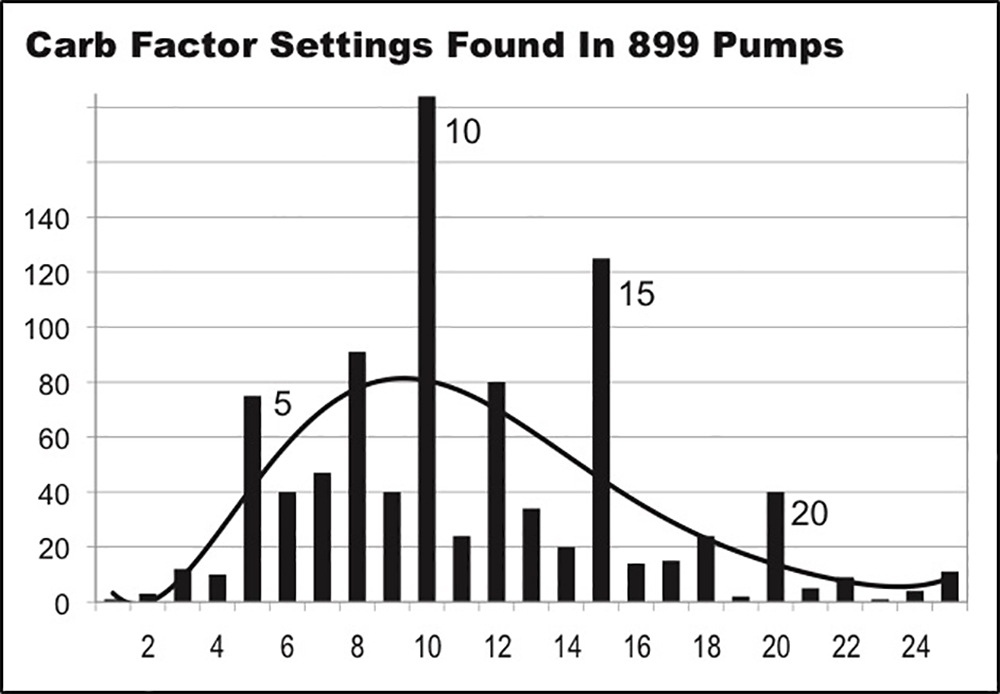For success, you want to optimize settings for basal rates, CarbFs, CorrFs, and DIAs. Setting errors are common when you consider that only 1 out of every 5 pump wearers has an A1c of 7.0% or less. And although some aretechnically “good” based on an A1c test, many of these readings turn out to not be stable. (If your’s are, please do a jig!) Optimal glucose outcomes require accurate settings, especially on one of today’s automated insulin delivery (AID) devices. Go Here if you are unfamiliar with an abbreviation or term.
Personal habits can play a role in the quality of glucose management. However in the Actual Pump Practices Study, the diabetes management habits among 132 pump wearers in the worst control tertile were nearly identical to those of the 132 pumpers in the best control tertile. High glucose levels were unrelated to carb counts, the number of daily carb boluses, or total insulin per day. The best and worst glucose control groups looked nearly identical in their carb counts, the number of boluses a day, and the frequency of glucose testing.
More surprising, the total daily dose (TDD) was actually higher in the worst control group. We had to conclude that either those in poorer control were not yet on enough insulin (a relatively low TDD due to inadequate BC settings), or some of their insulin was being lost through infusion set leakage.
Their CarbFs demonstrate one source for error.

CarbFs
As can be seen, pump and BC users, and healthcare professionals frequently select easy-to-use CarbFs like 5, 10, 15, and 20. Although mentally easy to use, they are frequently inaccurate. Even a 1 gram or less error in the CarbF dramatically changes glucose readings after each meal of the day. CarbFs are not alone. Basal rates orLAI doses, correction factors (CorrF or ISF), and duration of insulin action (DIA or IAT) frequently contain errors.
Tip: Don’t round your CarbF to the nearest number. Enter an accurate CarbF into your Bolus Calculator (BC), down to a decimal point, and let it do all the math.
Before you start, compare your current pump settings with the ones recommended in the optimized settings column on the right in the Pump Settings Tool. This compares your pump of BC settings with 132 well-controlled pump wearers in the APP Study whose average glucose was 144 mg/dl.
